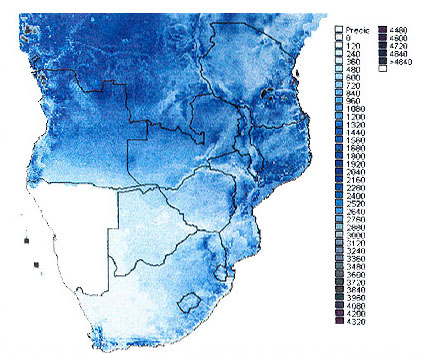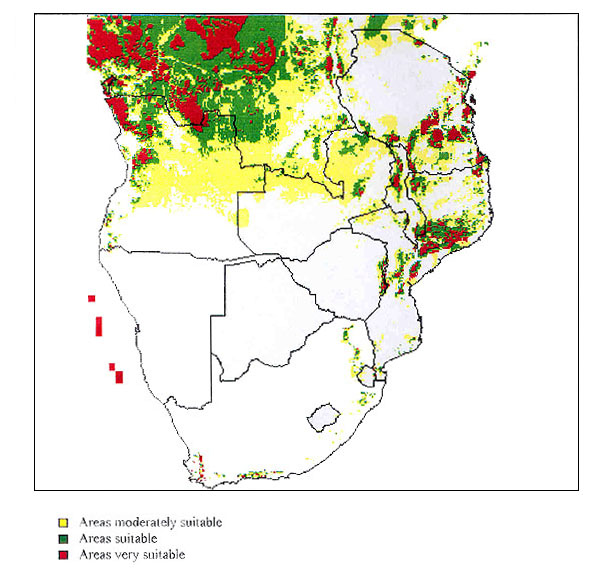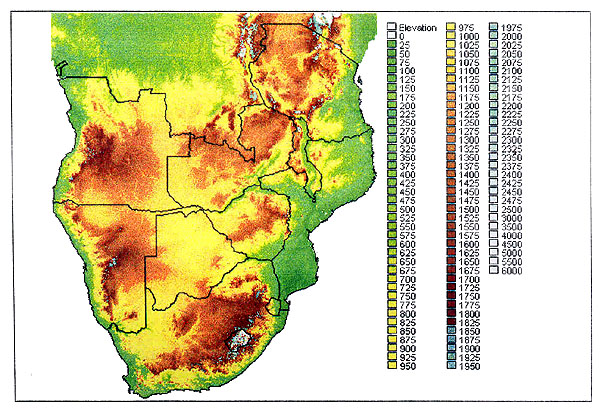Aquaculture is a form of farming that can be practised under a wide variety of conditions. Temperatures dictate to a certain extent the species to be used, the availability of inputs dictates the management practices, the economic situation influences the management intensity and the extent to which farmers will produce for the market. Large scale commercial fish farming can only be practised when a wide variety of conditions are suitable. Small-scale aquaculture, on the other hand, can be adapted to a much wider range of conditions. Nevertheless, for the adoption of small-scale aquaculture some basic conditions have to be met. It is necessary that:
the innovation meets farmers needs;
appropriate information is available to the farmers; and
physical conditions are suitable.
Adoption of aquaculture is a result of a combination of these three conditions. The results of the pilot projects permits a comparison of the relative importance of these conditions.
The reason why farmers will adopt fish farming is an issue often discussed by aquaculture projects. Sometimes it is argued that food security is the most important issue for smallholder farmers, while others claim that fish farming can only succeed when it is adopted for the purpose of earning money. ALCOM's experiences showed that there is not a single answer to this question.
Surveys carried out during the first years of ALCOM in different provinces of Zambia, revealed that receiving income from fish sales was the most important incentive for farmers to start aquaculture. At the same time intermittent harvesting was practised by the majority of these fish farmers, indicating that at least part of the fish was used for home consumption. An adoption study in Eastern Province of Zambia, revealed that the limited possibilities for some farmers to grow cash crops made them decide to adopt fish farming. Aquaculture was adopted for the purpose of earning money. The demand for cash appeared to be a more important factor than the demand for fish consumption in the adoption process. Where possibilities for the cultivation of cash crops were limited, farmers had to look for activities to supplement their household's budget.
Recent changes in the Zambian economy reduced the certainty of receiving reasonable prices for crops and increased the prices for commodities. This changed the behaviour of farmers who then concentrated much more on self reliance and securing household food security. The production of crops, including fish, for direct home consumption became more important.
Although farmers in Mozambique and Tanzania did sell part of their fish and traded fingerlings, the main purpose of fish farming was to have access to fish for home consumption. Land in the areas where fish farming had taken off was intensively used for the production of vegetables and fruits, that provided the farmers with an income. The supply of fresh animal protein in these areas was not reliable, which resulted in a greater need for fish for consumption than for sale.
Besides the felt need for the innovation, the social setting in which farmers lived determined adoption. Although fish farming was not limited to a certain social category within a local population, adoption rates were higher in the areas where the social structure was relatively loose. The rules and norms of who were supposed to take up fish farming first, were not too strong in a loose-knit social system. Those who wanted to start fish farming could did so without endangering their social situation. This was in contrast with close-knit societies, where the social system prevented other farmers from adopting fish farming, before the leader had a fish pond8.
The aquaculture pilot projects used a variety of methods to disseminate information to farmers. Most of this is already discussed under Chapter 5.2. The results of the pilot projects showed that when extension messages were appropriate and when suitable channels were used to disseminate the information, farmers were quick to take up fish farming. It also showed that dedicated extension staff, with access to sufficient means to be effective was required for this dissemination.
Aquaculture extension covered a large part of Eastern Province, Zambia. The effort was not equally divided over the whole province but many farmers in the province became aware of fish farming and its requirements. The distribution of fish farming adoption therefore provided an indication of the suitability of local conditions for fish farming.
In Mozambique nine extension workers received training in aquaculture and aquaculture extension but the uptake of fish farming was only reported in two out of these nine areas, and spread quickly in these areas. The dedication of the extension workers was instrumental in this adoption, but the conditions in these areas must have been favourable as well.
In Tanzania the project made serious efforts to select areas with physical potential for fish farming. The adoption of aquaculture here did not directly indicate that other areas were not suitable but it did provide information on some favourable conditions.
Water is obviously the most crucial requirement for any type of aquaculture, the topography of the area determines whether the water can be manipulated and diverted to ponds. An analysis of these two components was made using information available from the database of the SADC Regional Remote Sensing Project.
Figure 4 gives the total annual precipitation in southern Africa.

Figure 4: Total annual precipitation in southern Africa (in mm.)
Water is the single most important factor determining the possibility for aquaculture. Without water it is impossible to farm fish. Rainfall is a good indicator for the amount of water that a certain area receives. FAO's strategic reassessment of fish farming potential in Africa9 stated that:
“precipitation was considered the main source of water for small-scale fish farming. Other water resources such as perennial streams and rivers would exceed the economic limitations associated with small-scale farming.”
Contrary to this statement, none of the small-scale farmers in the areas where ALCOM worked relied on direct precipitation as a source of water for their ponds. In fact, in all project areas it would have been impossible to rely on precipitation alone. The rainfall was nowhere enough to fill a fish pond, and only in Tanzania, in extremely high rainfall areas, could ponds be kept filled with water from rainfall. Figure 5 shows the level of the water in fishponds in Morogoro Region, Tanzania, Eastern Province, Zambia and Manica Province, Mozambique, if precipitation would have been the only source of water. For initial filling a soil saturation level of 30 mm. was used and for seepage an average of 80 mm. per month. The average monthly precipitation and evaporation were further used to determine the water balance.

Figure 5: Pond water level with precipitation as the sole water source, in project areas.
It is obvious that in the project areas precipitation could not be used as the main source of water for ponds. The main sources of water for fish farming were small diverted streams and irrigation canals or the water table. Precipitation, however, still is an important indicator for the amount of water an area received.
Annual precipitation at the sites in Eastern Province, Zambia fluctuated between 1040 and 1536 mm. The average precipitation was 1210 mm. In Mozambique the annual precipitation at the sites in Manica Province fluctuated between 1168 and 2380 mm., with an average of 1552 mm. At four sites in Tanzania the precipitation was much higher, 2972 mm. on average, and fluctuated between 1408 and 4532 mm. per year. The lower figure was for one site situated at an irrigation scheme. Besides the higher annual precipitation in Tanzania, it was distributed over two rainy seasons, which made the dry period to bridge much shorter Zambia and Mozambique only had one rainy season.
Potential for fish farming in Eastern Province. Zambia was limited by the availability of water. Fish farming was only possible in selected places and even there, farmers often faced the situation where the ponds dried up. Fifty percent of the fish farmers experienced the drying up of their fish ponds during the past five years, on average their ponds dried up twice during that period. Water availability in Eastern Province could thus be considered a lower limit for fish farming. In Manica Province, Mozambique few farmers experienced problems with shortage of water. In Tanzania water was abundant, the only problem farmers faced with the water availability was the competition with other users.

Figure 6: Potential for aquaculture in southern Africa, based on annual precipitation
Figure 6 shows the potential for fish farming in southern Africa when the precipitation of these three areas is used as the only classification. Classification categories are moderately suitable for precipitation between 1080 and 1440 mm., suitable for precipitation between 1440 and 2160 mm., and precipitation above 2160 mm. indicates areas very suitable for fish farming.
The topography proved an important indicator for more detailed site selection for smallholder fish farming. Figure 7 gives an elevation map of southern Africa. Comparing Figures 4 and 7 shows that rainfall in southern Africa is often associated with areas of high altitude.
The small streams that drain the water of mountainous areas can easily be diverted on the slopes in such a way that they can be used for irrigation and for fish ponds. Once the streams reach the lower areas, the topography becomes more even. In order to attain sufficient head, water has to be diverted from a long distance. This is often beyond the means of smallholder farmers. In Morogoro Region and in Manica Province, ponds were constructed in the mountainous areas using water from these small diverted streams and canals.
The topography in Eastern Province of Zambia was less hilly, and there were no or very few perennial streams. Diversion of water was therefore not possible. In this area, ponds were fed with the water from the water table in low areas below hills and mountains.

Figure 7: Elevation map for southern Africa (altitude in metres)